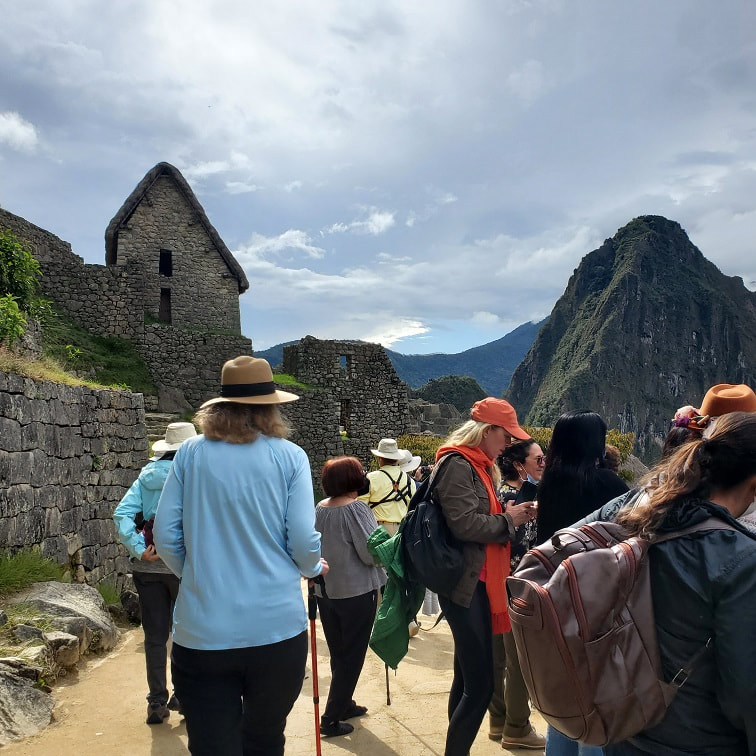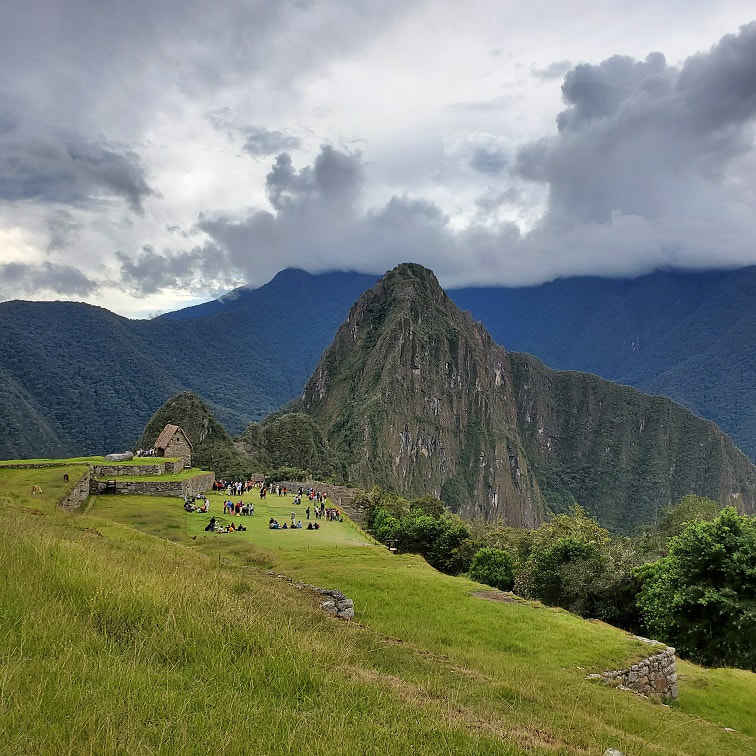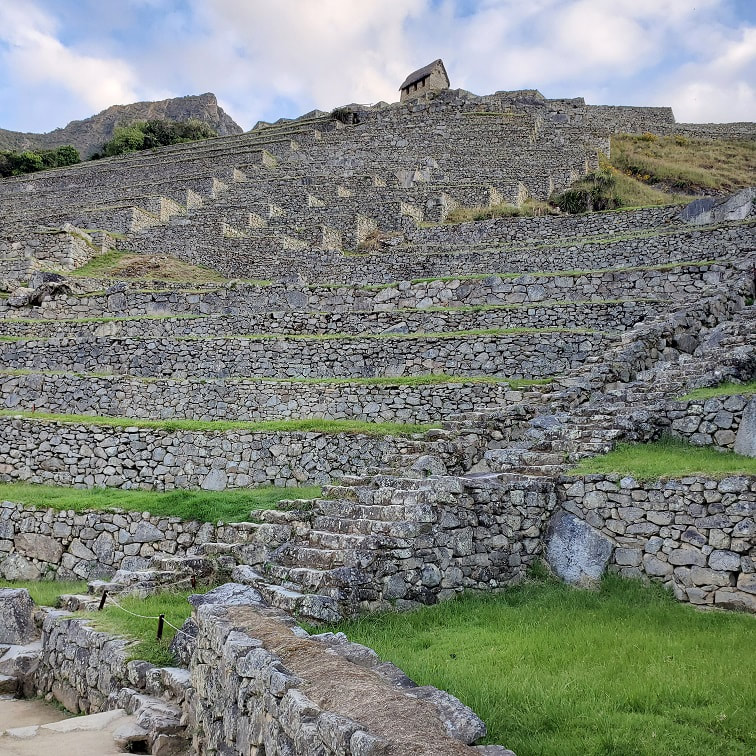|
We got to the hotel in the morning of May 4 and after lunch we met outside the hotel to walk the short distance to enter the World Heritage site of amazing citidel of Machu Picchu ("old mountain" in Quechua, the ancient language of the Incas). At 7,970 feel above sea level, its lower than Cusco. It's estimated that the site was built around 1450 during the reign of the Inca King Pachacutec. It is believed that Machu Picchu was built to house and support a population of around a thousand people – likely of higher class or religious importance – from the Inca Empire. The temples, terraces, and living structures at Machu Picchu were built with granite, a material abundant in the area. Inca builders chipped and chiseled stones to construct their citadel of Machu Picchu from a 250- million-year-old granite quarry. In 1911, explorer and Yale History Professor Hiram Bingham traveled to the Cusco area in search of Vilcabamba, the legendary last refuge of the Inca rebels where they organized guerilla-style resistance efforts until their final defeat in 1572. In the company of local sharecropper Melchor Arriaga and a local police officer commissioned by the Peruvian state to accompany the crew, Bingham made his way from a plantation called Mandorpampa, a 5-days’ journey from Cusco, and unveiled the first traces of what seemed to be “the largest and most important ruin discovered in South America since the days of the Spanish conquest.” It was noon of July 23, 1911, and the lost Inca city had been found. The high level of preservation and the general layout of the ruin are remarkable. Its southern, eastern, and western portions are surrounded by dozens of stepped agricultural terraces formerly watered by an aqueduct system. Some of those terraces were still being used by local Indians when Bingham arrived in 1911. Walkways and thousands of steps, consisting of stone blocks as well as footholds carved into underlying rock, connect the plazas, the residential areas, the terraces, the cemetery, and the major buildings. The Main Plaza, partly divided by wide terraces, is at the north-central end of the site. At the southeastern end is the only formal entrance, which leads to the Inca Trail. From Britannica.com
The engineer Kenneth Wright has estimated that 60 percent of the construction done at Machu Picchu was underground. Much of that consists of deep building foundations and crushed rock used as drainage. From "Discover 10 Secrets of Machu Picchu" from National Geographic. The site was amazing and awe inspiring. How was it built and wht was it abandoned (some think it was due to the advancing Spanish forces and draught)? As we were trekking out at about 5pm, Merle and I were beat. A quick refresh in our room, and then to to dinner with live music (see below).
0 Comments
Leave a Reply. |
Just the highlights and headlines...
Archives
January 2023
Categories |













































 RSS Feed
RSS Feed